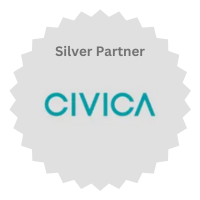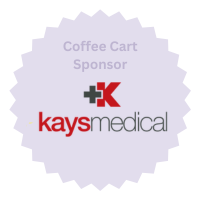Top Tips for Delivering Effective and Efficient Wellbeing Programmes
)
Developing impactful wellbeing and inclusion initiatives is essential for fostering a positive workplace culture, with all the added benefits for a business that entails.
However as we all know, there is no one-size-fits-all when it comes to wellbeing, and this goes for the business as much as the individual.
Now you know your business and what wider initiatives are needed (though if you’d like some external support with a wellbeing/culture audit we can help with that too).
Once you have an idea of what you want, these tips can help make sure you maximise the impact from them.
Organising wellbeing and D&I programs often involve challenges such as sourcing the right training, workshops and speakers, encouraging employee participation, and demonstrating their value.
These processes can be streamlined to maximize the impact of your initiatives and time.
1. Efficiently Source Speakers and Training:
Unless you have huge internal resources, sourcing external providers for training, workshops and awareness sessions is likely to be necessary, and this can be exceptionally time-consuming To help:
-
Maintain a curated list of trusted speakers (don’t forget to check insurance cover) and trainers who align with your company’s values and goals.
-
Streamline scheduling and coordination by using digital tools to manage communication and logistics.
-
Standardize processes for reviewing and approving external providers to avoid delays.
These steps can help ensure consistent quality while reducing administrative workload.
2. Enhance Employee Engagement
Even the best programs need active participation to succeed. To boost engagement:
-
Use visually appealing and accessible promotional materials to raise awareness.
-
Encourage managers to advocate for sessions during team discussions, positioning them as opportunities for growth and wellbeing.
-
Make registration easy and intuitive, ensuring employees feel invited and encouraged to participate.
Clear communication about the benefits of participation is key to driving attendance and enthusiasm.
3. Gain Line Manager and Leadership Support
Line managers play a critical role in enabling employees to engage with wellbeing initiatives. Live group training/workshops help to engender a permissive culture around attendance, especially if the session is actively supported by a senior leader. To secure their buy-in:
-
Present sessions as tools that directly support team productivity, resilience, and morale.
-
Offer flexible scheduling options to minimize disruption to daily operations.
-
Share examples of how these initiatives can address specific challenges, such as burnout or low engagement.
Managers are more likely to support programs when they see a clear connection to their team’s success.
4. Measure and Demonstrate Value
Measuring impact is essential to refine your strategy and secure ongoing support from leadership. Best practices include:
-
Tracking participation rates and collecting feedback from attendees to evaluate satisfaction and relevance.
-
Using data to identify trends over time, such as changes in attendance, engagement, or employee sentiment.
Establishing clear ideas of what success looks like, and then quantifying this, ensures alignment with organisational goals and helps build a case for continued investment.
To see how Lyfe Wellbeing can help with all of the above, saving you tens of hours of time, finding the right people for the right budget, and helping engage employees, simply email us at wellbeing@lyfetech.io








